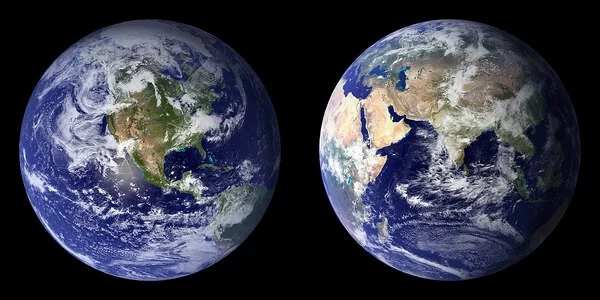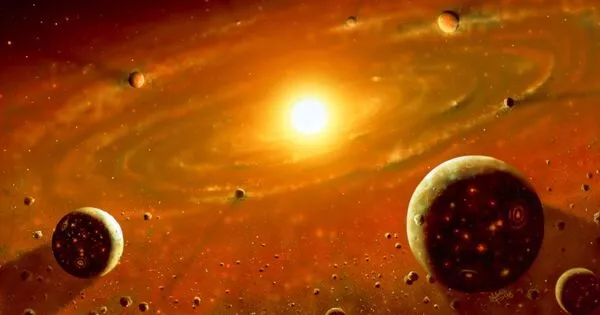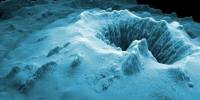While the precise timeline of Earth’s formation is still being researched and refined, the 4.5 billion-year estimate is widely accepted by the scientific community. It is based on a variety of evidence, including the ages of the oldest rocks on Earth and the Moon, as well as the ages of meteorites and other planetary bodies.
For decades, scientists believed that Earth was formed over a period of more than 100 million years. However, a new study from UCPH suggests that Earth’s formation was much faster, and that water and other essential ingredients for life were delivered to Earth very early on.
We may not think about the Earth very often as we go about our daily lives. However, this planet is the foundation of our existence. The air we breathe, the water we drink, and the gravity, which holds us down.
Until now, scientists believed that the Earth took more than 100 million years to form. It was also widely assumed that water was delivered by chance collisions with water-rich asteroids such as comets. However, according to a new study from the University of Copenhagen, it may not have happened entirely by chance.
We demonstrate that the Earth was formed by the rapid accumulation of small millimeter-sized pebbles. The Earth was formed in a few million years using this mechanism. According to our findings, the presence of water on Earth appears to be a byproduct of its formation.
Martin Bizzarro
“We demonstrate that the Earth was formed by the rapid accumulation of small millimeter-sized pebbles. The Earth was formed in a few million years using this mechanism. According to our findings, the presence of water on Earth appears to be a byproduct of its formation,” says Martin Bizzarro, a Professor at Globe Institute and one of the researchers behind the new study.
The study’s findings not only show that the Earth formed much faster than previously thought, but also that the presence of water is a predicted outcome of the process. This is significant information because it tells us something about planets beyond our Solar System.
“With this new planet formation mechanism, the chance of having habitable planets in the galaxy is much higher than we previously thought,” says Martin Bizzarro.

A greater chance of water on other planets
The potential for a planet to have the right ingredients on its surface for life to develop is referred to as habitability. Water is an important component of habitability.
“For a long time, people have debated how planets form. One theory holds that planets form through the gradual collision of bodies, gradually increasing in size over 100 million years. “The presence of water on Earth would require a sort of chance event in this scenario,” says Associate Professor Martin Schiller, who is also behind the new study.
An example would be if comets, which are icy bodies, bombarded the Earth’s surface near the end of its formation. “If that is how Earth formed, then we are extremely fortunate to have water on Earth. The chances of there being water on planets outside our Solar System are extremely low,” says Martin Schiller.
Instead, the researchers behind the new study propose a new theory about how the Earth was formed.
“There was a disk around the young Sun where the planets were growing. The disk was filled with small dust particles. Once a planet reaches a certain size, it sorts of act like a vacuum cleaner, sucking up all that dust very quickly. And that makes it grow to the size of Earth in just a few million years,” says Ph.D. student Isaac Onyett, who is the corresponding author of the study.
This vacuuming of small dust particles not only played an important role in the formation of Earth, but it also ensured that water was delivered to our planet. “The disc also has a lot of icy particles in it.” The hoover effect captures some of the ice as it draws in the dust. “Rather than relying on a chance event delivering water 100 million years later, this process contributes to the presence of water during Earth’s formation,” says Isaac Onyett.
There is a much greater chance of water being present on other planets now that we have new knowledge and understanding of the mechanisms. “This theory predicts that whenever a planet like Earth is formed, it will have water on it. If you go to another planetary system where there is a planet orbiting a star the size of the Sun, the planet should have water if it is close enough,” Martin Bizzarro says.
How the researchers did
The scientists used silicon isotopes to investigate the mechanisms and timescales of planet formation. The researchers were able to establish genetic relationships between rocky planets like Earth and Mars and other celestial objects by analyzing the isotopic composition of more than 60 different meteorites and planetary bodies. This method allowed the researchers to learn about the different types of building blocks that came together to form Earth, as well as the process by which they came together.
















